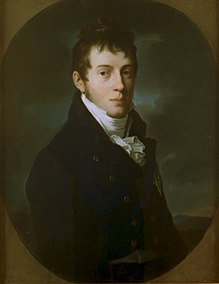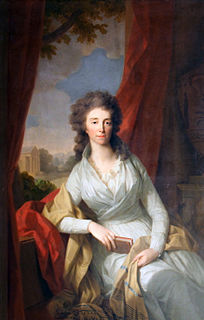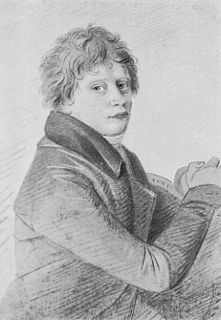
Saxe-Weimar-Eisenach was created as a duchy in 1809 by the merger of the Ernestine duchies of Saxe-Weimar and Saxe-Eisenach, which had been in personal union since 1741. It was raised to a Grand duchy in 1815 by resolution of the Vienna Congress. In 1903, it officially changed its name to the Grand Duchy of Saxony, but this name was rarely used. The Grand Duchy came to an end in the German Revolution of 1918–19 with the other monarchies of the German Empire. It was succeeded by the Free State of Saxe-Weimar-Eisenach, which was merged into the new state of Thuringia two years later.

The Duchess Anna Amalia Library in Weimar, Germany, houses a major collection of German literature and historical documents and is part of the UNO designated Classical Weimar. In 2004 a fire destroyed the main wing and a substantial part of the collection; restoration of salvaged volumes lasted until 2015.

Charlotte Albertine Ernestine von Stein, born von Schardt; 25 December 1742, Eisenach – 6 January 1827, Weimar, was a lady-in-waiting at the court in Weimar and a close friend to both Friedrich Schiller and Johann Wolfgang von Goethe, whose work and life were strongly influenced by her.

Charles Frederick was the reigning Grand Duke of Saxe-Weimar-Eisenach.

Grand Duchess Maria Pavlovna of Russia was the third daughter of Paul I of Russia and Sophie Dorothea of Württemberg. She was the Grand Duchess of Saxe-Weimar-Eisenach by her marriage to Charles Frederick, Grand Duke of Saxe-Weimar-Eisenach.

Princess Marie of Saxe-Weimar-Eisenach was a princess of Saxe-Weimar-Eisenach, by birth, and, by marriage, a princess of Prussia. She was the daughter of Charles Frederick, Grand Duke of Saxe-Weimar-Eisenach and Grand Duchess Maria Pavlovna of Russia.

Charles Alexander was the ruler of Saxe-Weimar-Eisenach as its grand duke from 1853 until his death.

Erwin und Elmire is an opera in two acts by Duchess Anna Amalia of Brunswick-Wolfenbüttel, with a libretto by Johann Wolfgang von Goethe, after Oliver Goldsmith's ballad of Angelica and Edwin, The Hermit, in his sentimental novel The Vicar of Wakefield.

Princess Sophie of the Netherlands was the only daughter and last surviving child of King William II of the Netherlands and of his wife Grand Duchess Anna Pavlovna of Russia. She was heir presumptive to her niece, Queen Wilhelmina of the Netherlands, for seven years, from the death of her brother until her own death.

Princess and Landgravine Louise of Hesse-Darmstadt was a German princess. She was the daughter of Louis IX, Landgrave of Hesse-Darmstadt. On 3 October 1775 she married duke Charles Augustus of Saxe-Weimar-Eisenach and as such a member of the court sphere of Weimar Classicism. She was held to be serious and introverted but also compassionate and sympathetic, in the aftermath of the Battle of Jena which guaranteed her part in the later "myth of Weimar" ("Weimarmythos").

Ferdinand Jagemann was a German painter; known primarily for his portraits.

Tiefurt House is a small stately home on the Ilm river in the Tiefurt quarter of Weimar, about 4km east of the city centre. It was the summer residence of duchess Anna Amalia of Brunswick-Wolfenbüttel.

Princess Ida Caroline of Saxe-Meiningen, was a German princess, a member of the House of Wettin, and by marriage Princess of Saxe-Weimar-Eisenach.

Anna Amalia von Helvig was a German and Swedish artist, writer, translator, socialite, Salonist and culture personality. She is known as an inspiration for many artists. She was a member of the Royal Swedish Academy of Arts.

Johann Christian Stark was a German physician and obstetrician born in Oßmannstedt. His nephew, also named Johann Christian Stark (1769–1837), was a noted obstetrician.

Katharina Elisabeth Goethe, known as "Frau Rat" was the mother of Johann Wolfgang von Goethe.

Prince Frederick Ferdinand Constantin of Saxe-Weimar-Eisenach was a titular Duke of Saxe-Weimar-Eisenach and a major general in the army of the Electorate of Saxony. He lived during the Age of Enlightenment.



























